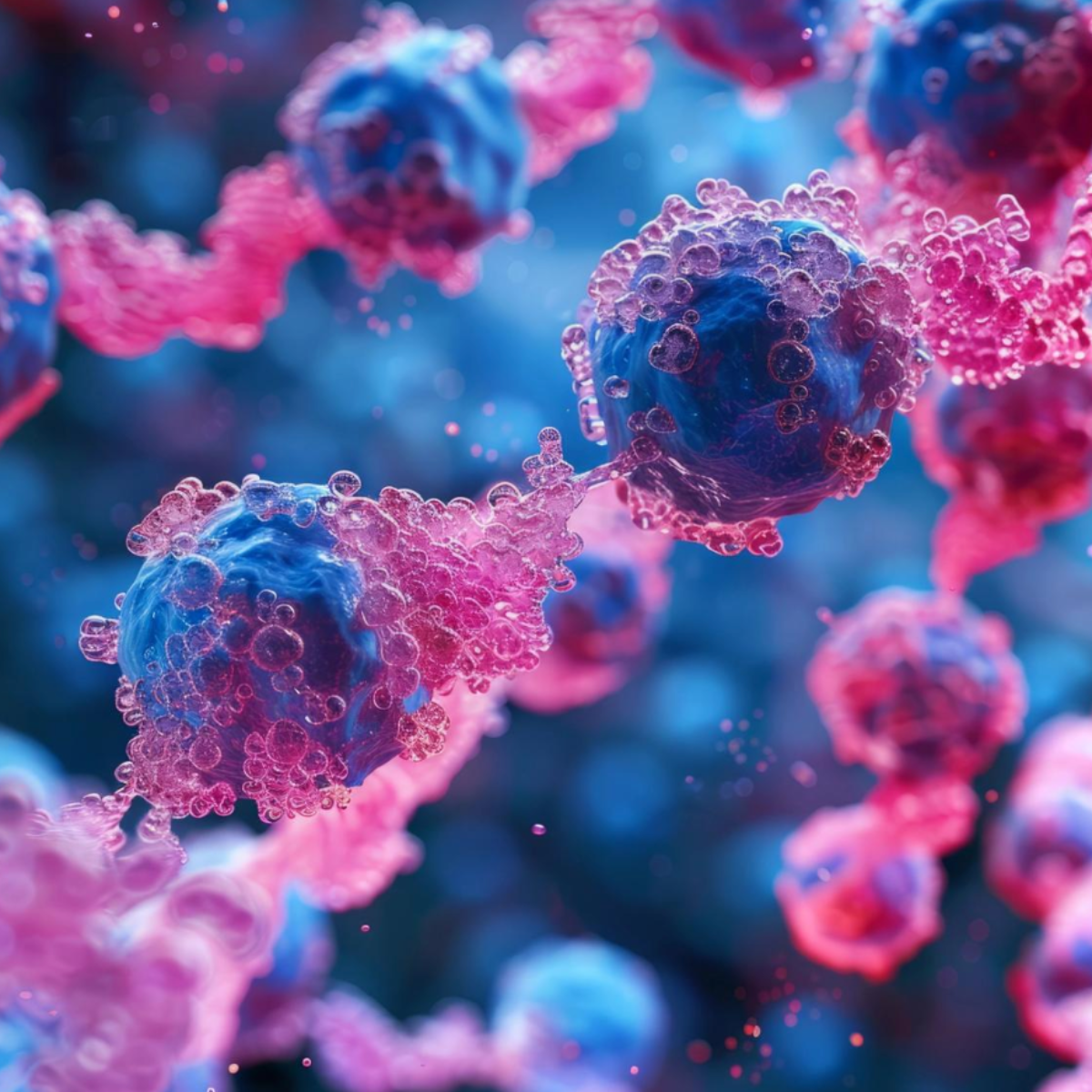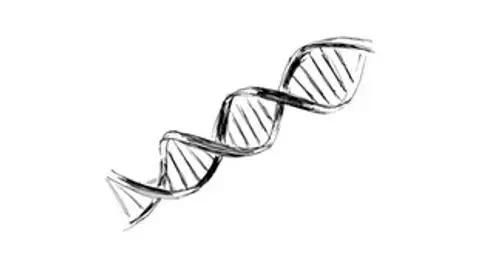Photo of sarcoma, magnification 200x, photo under microscope: © Chutima – stock.adobe.com
In the sarcoma field, this year marked a notable milestone with the presentation of numerous positive phase 3 trials at the 2025 American Society of Clinical Oncology (ASCO) Annual Meeting, highlighting progress in precision medicine, immunotherapy, and rare cancers.
Dale Shepard, MD, PhD, offered key takeaways from the meeting, focusing on advancements in sarcoma and broader trends relevant to oncology practice. Highlights included promising data on CSF1R inhibitor pexidartinib (Turalio) for tenosynovial giant cell tumor, novel tyrosine kinase inhibitor combinations, and emerging opportunities in genomically driven therapy.
In an interview with Targeted Oncology, Shepard, hematologist/oncologist at the Cleveland Clinic, discussed the clinical relevance of these findings, ongoing unmet needs in sarcoma, and the potential future directions.
Targeted Oncology: What were the overarching impressions of ASCO 2025? Were there any surprises or confirmed trends?
Dale Shepard, MD, PhD: I saw good progress in a lot of the areas that we have been studying for a long period of time. It looked like there were some studies that were looking at genomic or more specifically targeted therapies. There’s an example where a lot of trials right now are looking at KRAS G12 [mutations], and there was some promising data. For instance, we have 2 drugs for KRAS G12C, but there was some promising data for KRAS G12D, which reinforces the benefits of some of the studies that we currently have ongoing.
Cancer cells with pink bubbles: © Adobe Contributor – stock.adobe.comNormal

Immunotherapy tends to be very common for a lot of different tumors, and looking at novel approaches to immunotherapy seemed to be a continuing theme. But actually, a lot of the work that I looked at was more specific in sarcoma, and it was kind of back to basics, and looking at more targeted pathways, more sort of tyrosine kinase-based therapies as being effective—things in a lot of other disease groups have in many ways moved away from those. So, it was kind of encouraging to see some progress there.
From your perspective, what were the most significant practice-changing developments presented?
This was the first year that we have had 3 positive phase 3 trials. We are going to see how much that is practice-changing. But for the specific area that I specialize in, not as many things are practice-changing.
What were some key abstracts presented in the sarcoma space
There were a couple of things that were important. One, there was a drug called pexidartinib, which is a CSF1 receptor inhibitor, and it showed promising results in a phase 3 trial for tenosynovial giant cell tumor. It is a relatively rare tumor, but it can cause significant morbidity in patients, and it was promising because the response rates were over 50%, [and] it was well tolerated. There’s a treatment that is currently available, but the original treatment that was available has some hepatic toxicity associated with it. There was another drug that was recently approved in that space, but [pexidartinib] offers patients additional treatment options, and so that was encouraging.
There was this shift toward tyrosine kinase inhibitors in combination, either alone or in combination with chemotherapy, which looked promising. Oftentimes, we are thinking about sarcoma treatments, in many cases, [as] single-agent therapy, using a single type of treatment. We do not have as many combination therapies. There was a study that came out of Asia as a phase 3 trial that looked promising with a combination of a tyrosine kinase inhibitor, anlotinib, in combination with epirubicin. This is a drug that isn’t available in the States, but I think it’s a good reminder that sometimes these combinations can be beneficial. It looked very promising. This was actually in a first-line setting, it showed an overall progression-free survival [PFS] benefit. It was too early to see an overall survival benefit, but it had good disease control. So, it was promising to see.
Because many of our trials are trying to move away from treating sarcoma as a category and looking at more individual subtypes of sarcomas—since they are individual diseases—and we’ve had recent trials where we tried to look at an approach for sarcoma in general, and those have failed in phase 3. So, it was interesting to see, and I would argue that that might suggest that this approach is potentially beneficial. Because otherwise, if we had a large group of different, diverse sarcomas, we might have lost that benefit, which is what we’ve seen in some other studies where phase 2 trials were positive but not phase 3.
And then that same drug, anlotinib, was used for patients with late-stage leiomyosarcoma, which is another type of sarcoma. We don’t have a lot of treatment options for that either, and it also showed a very favorable PFS benefit.
Which early-phase trials or novel approaches caught your attention the most?
The novel approaches that I think look most promising are still the genomic-based therapies, and a lot of those are new. If we think about not treating cancers as where they came from geographically—we don’t necessarily want to treat breast like breast and lung like lung—if we can find an underlying genomic difference in those tumors compared to normal cells. I think some of our biggest successes—things like NTRK inhibitors, which are tumor-agnostic—are things where we don’t necessarily want to treat based on histology but more on the actual characteristics of the tumor. I think those really do offer a very promising approach. It underlines the need for doing sequencing of the tumors, looking for other ways to treat, because those can really lead to a lot more specificity, fewer toxicities, and a lot higher response rates.
Were there any key unmet needs that saw promising advancements this year in sarcoma, or any that still require more research?
I think the primary need still in sarcoma would be just looking at novel targets. In most cases, we are thinking about chemotherapy or targeted therapies, primarily working on drug receptors. We do not really have a lot of inroads for most sarcomas in the benefits of immunotherapies. Immunotherapy has made a tremendous difference in so many different kinds of cancers but really has not quite met that bar for success in sarcoma. So maybe some novel ways to incorporate immunotherapies is probably one of the bigger unmet needs.
What other areas were looked at?
We did not have a lot of AI-driven work in sarcoma this year. I think one of the other areas that was an area of active consideration was looking at things like prediction of response using things like circulating tumor DNA, further subset analysis, or breaking down tumors based on genomic profiles—things like that. Those might be able to generate more data. AI approaches might ultimately be important to try to incorporate. If you have so much information about a person’s tumor, how do you pick those next therapies? So, there’s certainly that potential, but not at this point.
What strategies do you recommend for oncologists to integrate these new findings into their practice?
At this point, these are not necessarily practice-changing—in terms of the [tyrsoine kinase inhibitors], for instance, either alone or in combination with chemotherapy, the pexidartinib for tenosynovial giant cell tumor, which is a positive phase 3 trial—I think the biggest unanswered question is that we now have 3 drugs for a relatively rare tumor, and how do you pick the right drug for the right patient? How do you determine how long patients need to be treated? Can patients be re-challenged?
This is an aggressive benign tumor, not a cancer. They don’t metastasize. They can cause significant problems, but they’re not life-limiting. And so how do we properly treat patients in a way where we can control their disease but not cause harm long-term?
What is one key message or piece of advice to other oncologists that you would pass on?
A takeaway that actually came from another study that I thought was really interesting and that can potentially apply to a lot of different patients is, patients will say, “What else can I do?” You told me about a treatment—“What else can I do?” I always recommend a heart-healthy diet, good night’s sleep, and staying active. And there was an interesting study that came out looking at patients with colon cancer—stage III colon cancer [and] high-grade stage II—where adjuvant chemotherapy was followed by either structured exercise or just information about exercise. And they were followed for a long period of time. In fact, the people that did structured exercise, that really adhered to an exercise program, there was a 28% reduction in development of new cancers or recurrence, and a 37% reduction in risk of death. This is from exercise.
When you looked around at all the posters, there were lots of technical therapies, a lot of expensive interventions, and some of them don’t come close to that sort of benefit. Something as simple as exercise can have a profound effect. It was kind of nice to see that the recommendation I always give—for people to live as healthy a lifestyle as possible, staying active, exercise, maintain a heart-healthy diet—things that are certainly good for cardiovascular health, diabetes, hypertension, but in fact, can help out from the standpoint of their cancer as well. It was kind of interesting to see such a technically low-key intervention can have such a profound effect.
What are you most excited for the future of cancer care?
I think the biggest areas of excitement continue to be that we are finding new things and that we are continuing to find new approaches, either that be molecular targets, ways to interact with changes in receptors that lead to things like resistance or insensitivity, novel ways to approach the immune system. We have had so many different approvals based on checkpoint inhibitors, but we know that those don’t work in everyone, and they stop working in those that have had responses. The immune system is such a complex system, and it’s good to see that we’re finding new ways to use the immune system.
I think this year, mostly it was the stepwise [progress], in terms of little bits of information that we learned, and then ultimately, that can come together, and we might have that next big plateau in terms of our ability to treat patients. As long as we are able to continue doing the basic science and clinical research and prove that it might be effective in people, there’s good reason for hope.
